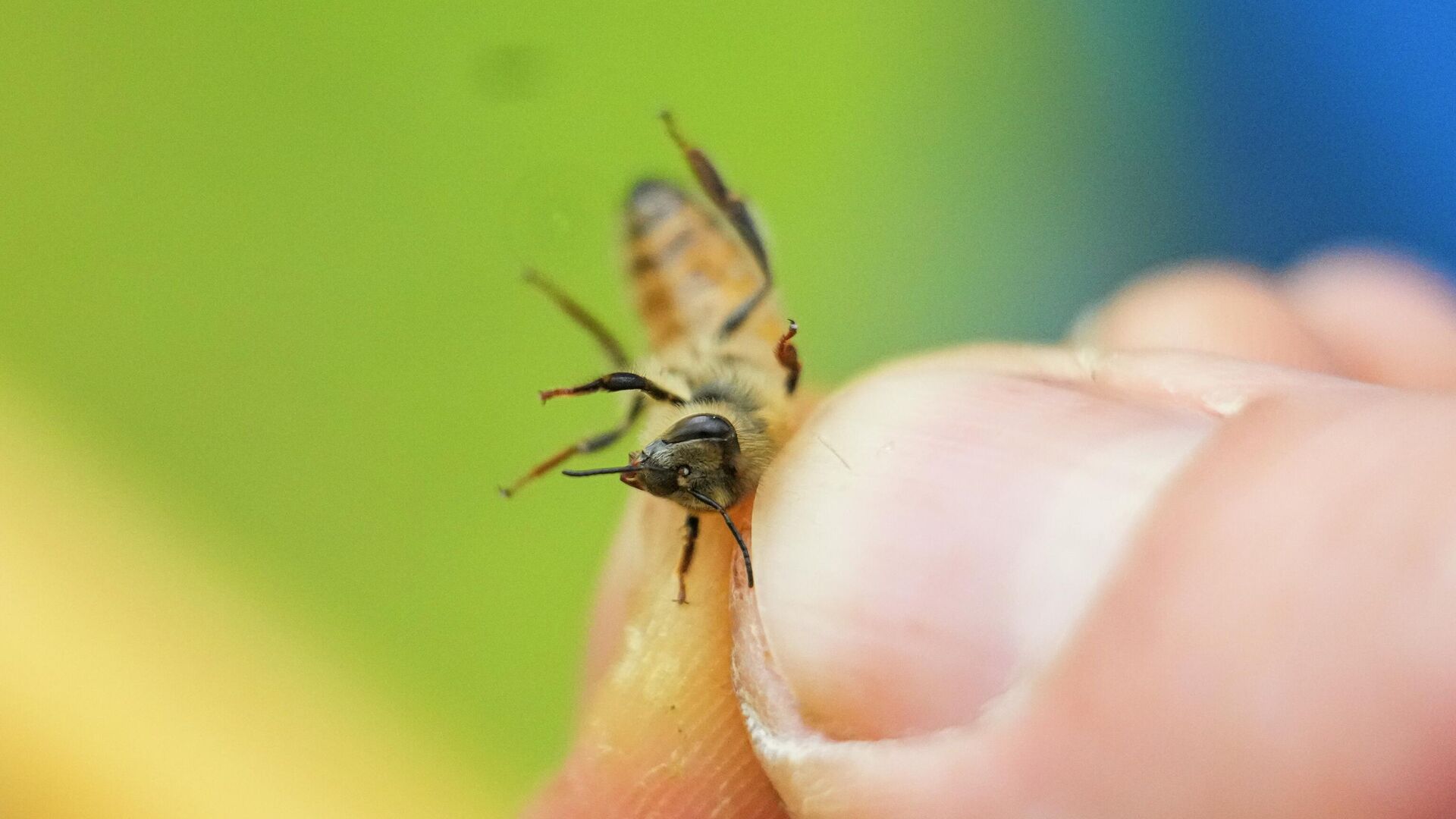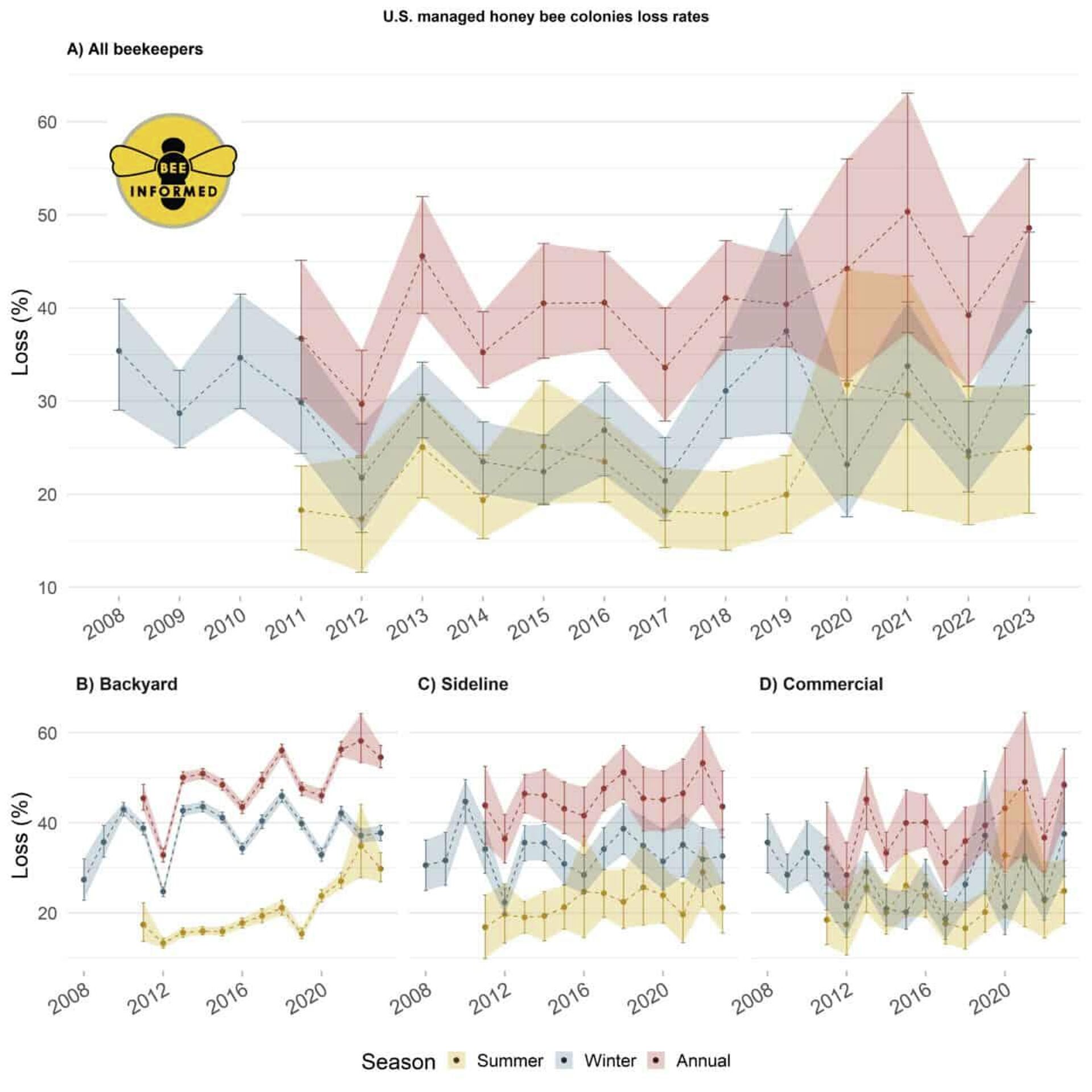https://sputnikglobe.com/20230804/deadly-us-heat-wave-killing-honeybees-threatening-food-production-in-arizona-1112380161.html
Deadly US Heat Wave Killing Honeybees, Threatening Food Production in Arizona
Deadly US Heat Wave Killing Honeybees, Threatening Food Production in Arizona
Sputnik International
The extreme heat, which exceeded 113 degrees for several days, is taking a heavy toll on honeybee colonies as the bees' ability to forage and cool hives is compromised.
2023-08-04T00:38+0000
2023-08-04T00:38+0000
2023-08-04T00:38+0000
beyond politics
us
arizona
bees
heat
heat wave
extreme heat
honeybees
https://cdn1.img.sputnikglobe.com/img/07e7/08/03/1112379194_0:77:3072:1805_1920x0_80_0_0_2d41bc33ecbc3339f0c72023f96dab13.jpg
As Arizona battles an unprecedented and deadly heat wave, experts are growing increasingly concerned about the alarming rise in dead honeybees - a crucial species for our ecosystem, particularly in food production.With temperatures soaring to record-breaking levels, beekeepers and entomologists in Arizona are sounding the alarm. The extreme heat, which exceeded 113 degrees Fahrenheit for several days, is taking a heavy toll on honeybee colonies. The bees' ability to forage and cool their hives is compromised, leading to an increasing number of casualties.Beekeeper Cricket Aldridge, who is now dedicated to saving bees from the scorching heat, described how "bees' homes are being melted," and bee colonies are attacking each other over food scarcity. As beehives rely on evaporation for cooling, the prolonged and intense heat wave causes them to melt.Nair warns the impacts of the heat wave on honeybees could be felt for years to come. Last year, the US witnessed a 48% loss in managed honeybee colonies due to various threats to their habitat and nutrition.Experts offer a lifeline for these crucial pollinators. They urge people in regions experiencing extreme heat to provide water for bees and encourage the growth of native plant species, which can offer much-needed support to the struggling honeybee populations.
arizona
Sputnik International
feedback@sputniknews.com
+74956456601
MIA „Rosiya Segodnya“
2023
News
en_EN
Sputnik International
feedback@sputniknews.com
+74956456601
MIA „Rosiya Segodnya“
Sputnik International
feedback@sputniknews.com
+74956456601
MIA „Rosiya Segodnya“
us honeybees, what is happening with bees in us, how heat affects bees, do bees suffer from high temperature, why are bees important, bees role in ecosystem, how bees cool themselves in heat, arizona bees suffer from heat
us honeybees, what is happening with bees in us, how heat affects bees, do bees suffer from high temperature, why are bees important, bees role in ecosystem, how bees cool themselves in heat, arizona bees suffer from heat
Deadly US Heat Wave Killing Honeybees, Threatening Food Production in Arizona
Honeybees employ water and wing-flapping to maintain the hive's temperature between 92 and 104 degrees Fahrenheit. However, with the scorching heat consuming the US and much of the world, these efforts have limitations, leading to the sight of dead bees around hives.
As Arizona battles an
unprecedented and deadly heat wave, experts are growing increasingly concerned about the alarming rise in dead honeybees - a crucial species for our ecosystem, particularly in food production.
"We are seeing dead bees around hives... That is because of the heat – it’s too hot in the hives and bees won’t let[other bees] back in," Shaku Nair, an entomologist with the University of Arizona, told US media.
With temperatures soaring to record-breaking levels, beekeepers and entomologists in Arizona are sounding the alarm. The extreme heat, which exceeded 113 degrees Fahrenheit for several days, is taking a heavy toll on honeybee colonies. The bees' ability to forage and cool their hives is compromised, leading to an increasing number of casualties.
Beekeeper Cricket Aldridge, who is now dedicated to saving bees from the scorching heat, described how "bees' homes are being melted," and bee colonies are attacking each other over food scarcity. As beehives rely on evaporation for cooling, the prolonged and intense heat wave causes them to melt.
The situation is dire as honeybees are vital pollinators for crops like melons, citrus fruits, zucchini, coffee and chocolate. The prolonged heat wave has caused wilting flowers and the death of essential food sources like saguaro cactuses, leaving bees with limited options for foraging.
Nair warns the impacts of the heat wave on honeybees could be felt for years to come. Last year, the US witnessed a 48% loss in managed honeybee colonies due to various threats to their habitat and nutrition.
Experts offer a lifeline for these crucial pollinators. They urge people in regions experiencing extreme heat to provide water for bees and encourage the growth of native plant species, which can offer much-needed support to the struggling honeybee populations.





